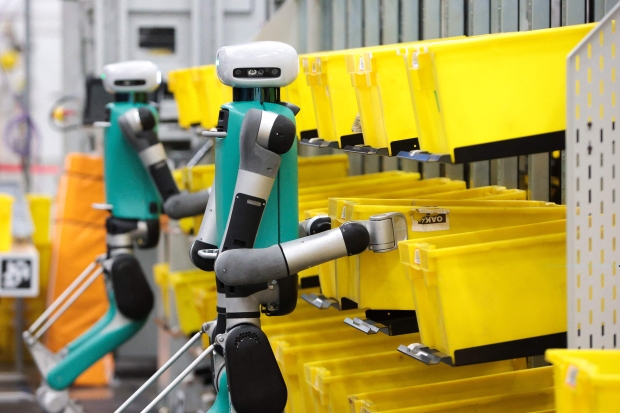Science, Space, Health & Robotics News - Page 19
One of the most famous stars in the night sky will vanish today
One of the most iconic stars in the night sky will vanish out of sight today, as astronomers have tracked an asteroid that will be passing right in between our line of sight of the star.
That star is Betelgeuse, and it's the 10th brightest star in the night sky. Reports indicate that Betelgeuse will vanish for 12 second in what is considered an "ultra rare eclipse" caused by the asteroid 319 Leona passing directly in front of it.
Notably, the eclipse will be seen from Earth, and according to The International Occultation Timing Association a ring of fire will appear through its main path across Asia and southern Europe. The event will only be visible for a short time, which means its recommended to plan your day if you desire catching it. For those that won't be able to see the ring of fire event by going out their back door, you can tune into the Virtual Telescope Project that will be hosting a livestream that begins at 8:00 p.m EST on December 11.
Continue reading: One of the most famous stars in the night sky will vanish today (full post)
Scientists discover window back in time to life on Earth 3.5 billion years ago
A group of scientists discovered a region of Earth that has previously gone undocumented, and within this region is a unique ecosystem that may be a window for researchers to look back 3.5 billion years to the state of life on Earth.
The previously undocumented region is located in a remote Argentina desert at an altitude of more than 12,000 feet. The team of researchers that discovered it caught glimpses of the terrain through satellite images and decided to pack up a car, drive as far as the road would take them, and then, when the road finished, walk to what now appears to be a prehistoric world of its own.
The researchers discovered a series of lagoons surrounded by salt flats that are home to microbial communities of stromatolites. These stromatolites are created by cyanobacteria, formerly known as blue-green algae, and a photosynthesizing bacteria that grows alongside minerals to create unusual rock formations over time. Researchers described this region in Argentina as the "best modern examples of the earliest signs of life on Earth".
Scientists capture jaw droppingly rare deep sea giant in the 'midnight zone'
A team of scientists has caught a giant deep sea creature on film that resides at a depth of the ocean where sunlight can't even reach.
The only natural light source at depths of 3,300 to 13,100 feet is bioluminescence or organisms that produce their own light source. While that just simply won't do for researchers, robots are equipped with torches to see in extreme darkness.
Researchers from the Schmidt Ocean Institute took their remote-operated research vessel called Falkor to Costa Rican waters, where they descended to the "midnight zone" and captured rare footage of a giant phantom jelly - an animal scientists know very little about, per the Monterey Bay Aquarium Research Institute. The Schmidt Ocean details the discovery in an X post where it states this giant phantom jelly has four tentacles that can grow up to 10 meters in length (33 ft) a 3.28-foot-long pulsing, umbrella-like bell.
Scientists unveil the world's first Harry Potter invisibility 'cloak'
The iconic Harry Potter invisibility cloak has been brought to life by a group of scientists who have unlocked a ground-breaking new level of optical technology.
According to several reports and the South China Morning Post, the new technology is called an InvisDefense Coat and is capable of hiding the human body day or night, specifically from security cameras that are being monitored by artificial intelligence. At a recent scientific event in Shanghai, China, Chu Junhao, a renowned physicist from Donghua University, took to the stage to demonstrate how certain materials can be invisible to the human eye, which generates an effect that is out of science fiction or fantasy.
The scientist explained that the new technology uses what are called convex cylindrical lenses, which are placed in a row across the sheet of paper seen in the above video. "Each vertical lens can shrink and thin objects parallel to it so that light can refract," Chu explained. Technology such as this has widespread application, and specifically in the military sector, as vehicles such as fighter jets could have the material placed on their belly, entire structures built out of it, and general stealth applications.
Continue reading: Scientists unveil the world's first Harry Potter invisibility 'cloak' (full post)
Nintendo Switch 2 leaks point to big upgrades and early release date
Rumors about the Nintendo Switch 2 continue to swirl around, as fans of the company are excited to see what the next console could entail.
There are a couple of rumors, and the first comes from a Korean News site, Chosun Biz, which has claimed that Nintendo is currently engaging in conversations about implementing "next-generation OLED panels" for the company's new devices. Unless Nintendo releases an entirely new device, it appears that the display upgrade is for the Nintendo Switch 2. The report claims that Nintendo is in talks with Samsung Display about supplying OLED panels on December 1, 2023.
An additional rumor comes from the known Samsung leaker @Tech_Reve (Revegnus) on X, which reports indicate has had a pretty good track record with accurate Samsung leaks. Revegnus took to his X account on December 4 and posted that the Nintendo Switch 2 will be coming out "early next year". Further rumors regarding Nintendo's new device include the adoption of an NVIDIA chip that enables DLSS support, 4K support, the company releasing a digital-only model that features an LCD screen, and a physical cartridge model with an OLED screen.
Continue reading: Nintendo Switch 2 leaks point to big upgrades and early release date (full post)
Elon Musk rolls out new AI to X that has a 'killer feature'
Elon Musk has officially started rolling out the new AI-powered chatbot Grok, developed by Musk's AI startup, xAI.
X has taken to its official X account on the platform to announce that Grok is now being rolled out to Premium+ subscribers across the United States. For those that don't know, Premium+ is the paid version of X, the social media platform formerly called Twitter, and it costs $16 a month, which gets you an ad-free experience on the platform, other features, and now Grok.
The new AI chatbot is powered by the generative model called Grok-1 and is trained on data acquired from the web that's as recent as Q3 2023. Additionally, Grok differentiates itself from other chatbots, such as OpenAI, as it also incorporates real-time data from X, which means the chatbot should be able to provide responses on posts occurring on X in real-time.
Continue reading: Elon Musk rolls out new AI to X that has a 'killer feature' (full post)
World's first mass-produced humanoid robot factory to open in the US
The future is upon us as a company is planning to open the very first mass-produced humanoid robot factory, designed to assist big companies with dangerous hauling, lifting, and moving.
The new facility will be the first of its kind in the United States and is slated to be constructed in Salem, Oregon. Agility Robotics is behind the project and recently sat down for an interview with Axios about the new facility dubbed "RoboFab". Agility Robotics is behind the humanoid robot called Digit, which is designed for warehouse work and is currently being tested out by Amazon. Ultimately, Agility Robotics has a goal of creating a "general purpose" Digit.
Notably, Agility Robotics has produced approximately 100 robots since it was founded in 2016, but it expects that once the new Oregon facility is completed, it will be able to eventually ramp up to 10,000 robots per year. So, how is Digit doing so far? Amazon is testing one in a laboratory in south Seattle and has said that Digit is able to move, grasp, handle items, move around the warehouse, and its size and shape are perfect for buildings designed for humans.
Continue reading: World's first mass-produced humanoid robot factory to open in the US (full post)
NASA plans to revive its iconic space telescope soon after critical glitch
NASA has announced it is bringing back to life its iconic space telescope after it experienced a critical glitch with its gyroscope.
It was only a few days ago that the space agency announced that the Hubble Space Telescope had entered safe mode following the detection of a glitch with its gyroscope. The glitch resulted in Hubble sitting in safe mode for some days, and during this period, NASA officials on the ground analyzed the data and worked out the issue. Notably, the gyroscope on the space telescope measures the turn rates of the telescope, which plays a critical role in knowing which way Hubble is facing.
NASA has taken to its website to announce that Hubble's scientific operations are good to continue under "three-gyro control". Furthermore, NASA wrote in its blog post that ground teams performed several tests that led them to decide to operate the space telescope in a higher-precision mode when conducting scientific operations. Lastly, NASA writes that Hubble and its instruments remain stable and healthy.
NASA celebrates the ISS hitting 25 years in orbit with an epic photograph
NASA has taken to its blog to announce that 25 years ago, on December 6, the first two modules of the International Space Station (ISS) connected, beginning the space station assembly era.
The space agency has taken to its website to give a brief summary of the events that took place to create what we call today the International Space Station. NASA explains that the two modules, Zarya and Unity, were mated during the STS-88 mission of the space shuttle Endeavour.
The space agency writes that Endeavour's Canadarm robotic arm grappled to Zarya, which had been in orbit for two weeks at that time, and connected it to Unity, which was stowed within Endeavor's payload.
Satellite captures the birth of a new island forged in volcanic fire
At the end of October 2023, a new island appeared on the surface of the Pacific Seas off Japan, and now satellites have imaged its continuous growth.
The new island has been officially called Niijima, which translates to "new island" in Japanese. According to the University of Tokyo, the new island was caused by an underwater volcanic eruption that occurred on October 21, 2023, and then on October 30, magma interacted with the ocean water, producing a massive explosion. This interaction created massive rock chunks several feet long, with reports indicating some were hurled more than 160 feet into the air.
The European Space Agency's Copernicus Sentinel-2 satellite snapped the below image of the new island on November 27, which shows the underwater volcanic activity is still proceeding. On November 27, the Japan Coast Guard took to X to share footage of the island being rocked by a following volcanic eruption, which is still ongoing. Notably, Japan Meteorological Agency's volcanic division expert Yuji Usui spoke to AP and said that the survival of Niijima may depend on its rock composition.
Continue reading: Satellite captures the birth of a new island forged in volcanic fire (full post)










